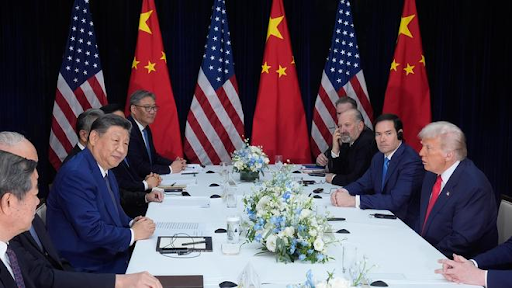



India is unlikely to ratify the BBNJ ‘High Seas Treaty’ at the 2025 UN Ocean Conference due to pending legislative amendments. Signed in September 2024, the treaty awaits 60 ratifications to take effect. India emphasizes marine conservation, launching the ‘SAHAV’ portal and supporting a Global Plastics Treaty.

Copyright infringement not intended
Picture Courtesy: THE HINDU
India delays formal ratification of the High Seas Treaty at UN Ocean Conference.
The ongoing third United Nations Ocean Conference (UNOC3) in Nice, France, has put a spotlight on the BBNJ treaty, with the aim to accelerate its entry into force.
The Union Minister for Science and Technology, who is representing India at the conference, stated that India is evaluating the treaty and is in the “process of ratifying the treaty.”
India's stance is significant due to its extensive coastline, growing 'Blue Economy,' and increasing strategic presence in the Indian Ocean.
Biodiversity Beyond National Jurisdiction (BBNJ) agreement, also known as the ‘High Seas Treaty’, is the first-ever international legally binding treaty to address the conservation and sustainable use of marine biodiversity in the high seas.
The treaty becomes legally effective 120 days after 60 countries have ratified it. As of June 10, 2025, 49 countries had completed the ratification process.
The BBNJ Agreement is built on four key pillars
Marine Genetic Resources (MGRs) => This includes establishing rules for accessing MGRs and ensuring the fair and equitable sharing of benefits derived from them, both monetary and non-monetary.
Area-Based Management Tools (ABMTs) => The treaty provides a mechanism to establish Marine Protected Areas (MPAs) to conserve and manage specific, ecologically important parts of the high seas.
Environmental Impact Assessments (EIAs) => It mandates that countries conduct and publicize EIAs for planned activities in the high seas that could have significant impacts on the marine environment.
Capacity-Building and Transfer of Marine Technology => The agreement aims to assist developing nations by providing them with the necessary funding, skills, and technology to participate in and implement the treaty.
Must Read Articles:
Addressing Challenges in BBNJ Treaty Ratification
Source:
|
PRACTICE QUESTION Q. The ratification and effective implementation of the High Seas Treaty face significant geopolitical and logistical challenges. Identify and discuss these challenges, suggesting measures to overcome them. 250 words |




© 2026 iasgyan. All right reserved